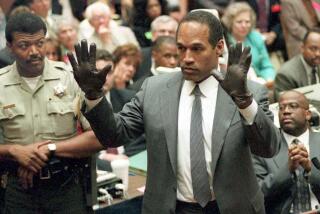TV Just Can’t Tell the Real News From the Faux News
- Share via
Terry Anzur discusses her objections to the practice of hiring untrained (by college journalism) and inexperienced (in news departments) people to work in TV news formats (“Troubling Trends for Journalists,” Counterpunch, June 23). Although her concerns have merit, this problem ranks far down the “what’s wrong with TV news?” scale. Some of the more pressing items might be:
* Lead stories (or the most air time) determined by what pictures are available, regardless of the importance of the subject covered (helicopter coverage of freeway chases, small building fires, etc.). Increasingly, the lead story on TV news is the back-page/off-hour coverage in newspapers, radio and magazines.
* A live remote takes precedence even if the reporter has nothing to report, because it’s “live, on location.”
* The increasing use of “focus groups” to shape the news coverage. Stations train local news anchors to engage in “happy chat” because focus groups say they trust the news reader more if he or she makes a comment after a story. “It shows they’re listening; it shows they care,” say the focus groups.
* Stations market their news readers instead of the strength, depth and experience of their news gatherers.
Anzur’s complaint and this list are the products of an eroding line between real news and faux news. As news and entertainment divisions combine, the entertainment value of news goes up, and the caliber of reporting goes down.
Although hiring people from the political arena can make for biased reporting, the average Joe Public knows where that “reporter’s” vantage point comes from, and, in those cases, we weigh what is said by who’s saying it. The greater threat comes from the shaping of TV news by entertainment-trained management assigned to “focus” the news.
DAVID ELLIOTT
Placentia
More to Read
The complete guide to home viewing
Get Screen Gab for everything about the TV shows and streaming movies everyone’s talking about.
You may occasionally receive promotional content from the Los Angeles Times.






